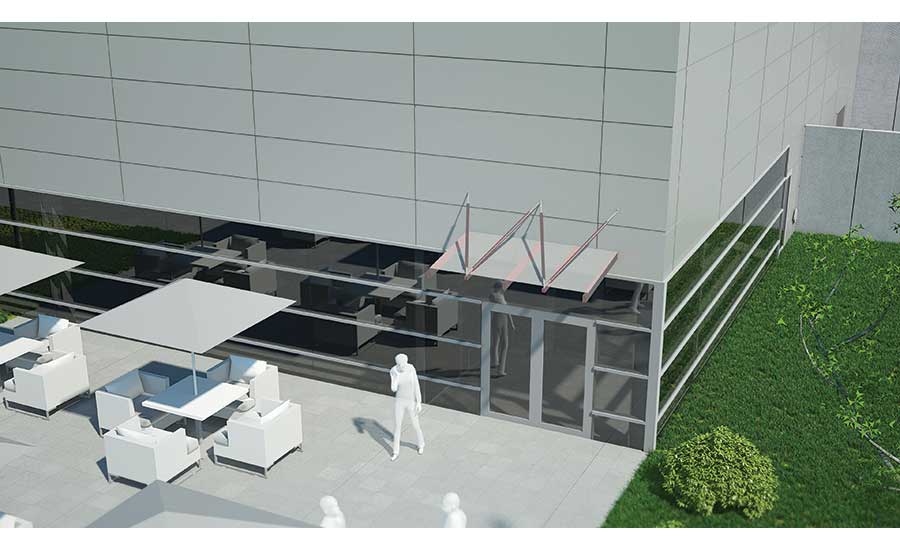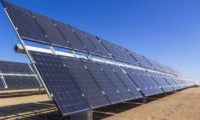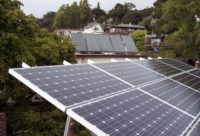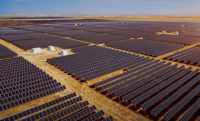Solar power and energy storage developers are once again pressing the U.S. Commerce Dept. to reject a petition for anti-circumvention tariffs on components from Cambodia, Malaysia, Thailand and Vietnam, which are accused of assembling panels and other products from banned Chinese parts, with minimal alternations, and shipping finished products to the U.S.
The pressure comes as two new manufacturing plants were announced in the U.S. this month, and others are on the drawing board, intended to boost a very fledgling American industry, with financial incentives from the federal government.
More than 240 sector companies asked Commerce Secretary Gina Raimondo in a Nov. 16 letter to reject the pending petition by U.S.-based Auxin Solar by Dec.1, the date she must make a preliminary determination. “It would be an improper expansion of U.S. anti-circumvention law for the department to conclude otherwise,” the letter says.
Industry argues that solar cell and module manufacturing requires specialized equipment and is an intensive process. “The ample evidence in these proceedings verifies that solar cell and module manufacturing involves technologically sophisticated operations which greatly exceed the anticircumvention statute’s “minor or insignificant processing” limitation,” the letter says.
Commerce delayed the initial Aug. 29 deadline for its preliminary determination after Auxin asked that it take more time to analyze public comments.
If the agency affirms the petition, it would create new uncertainty for American solar businesses, stifle deployment, limit American solar sector jobs and undercut efforts to address climate change, the letter said.
“With the ink barely dry on the historic Inflation Reduction Act, to reverse course and place additional costs on U.S. solar companies would be entirely counterproductive to the ambitious decarbonization goals established by this administration,” the letter says.
While the U.S. seeks a goal of 50 GW of solar generation by 2030, if Commerce agrees with Auxin, antidumping and countervailing duty tariffs would be added to solar panels from the four countries. In June, President Joe Biden issued an emergency under the Tariff Act that directed the department to permit solar cell and module imports from them to be free of the duties for 24 months or until the emergency ends.
Solar panel manufacturers are moving to close the gap between U.S. manufactured and imported solar panels with two major plant announcements on Nov. 17.
U.S. Solar Manufacturing Expands
Developer First Solar said it would invest $1.1 billion into a new photovoltaic (PV) solar module manufacturing facility in north central Alabama. Set for a site in an existing industrial park adjacent to the Tennessee River in Lawrence County, the fully vertically integrated facility will have a planned annual capacity of 3.5 GW when commissioned, expected in 2025.
Rudolph Libbe Inc., design-builder of First Solar’s existing plants in northeast Ohio, confirmed that it will also lead the Alabama project.
The plant is part of First Solar's plan, announced in August, to expand domestic production of its thin-film solar modules by more than 10 GW., following passage of the Inflation Reduction Act, which provides tax credits for both domestic production and use of clean energy components. First Solar's efforts also include increasing capacity at its Ohio plants—including a new $680-million, 1.8-million-sq-ft facility in Lake Township set to finish in the first half of 2023. A $270-million research and development center in Perrysburg, Ohio, is also planned.
The firm, which is the only U.S.-based company among the world’s 10 largest solar manufacturers, also operates production facilities in Malaysia and Vietnam.
A spokesman for power producer Tennessee Valley Authority said it began working with First Solar about 8 months ago to identify sites in its territory that could meet the company’s extremely quick timeline to production, adding that the Alabama location has a strong labor force and proximity to transportation to move raw materials and finished panels.
First Solar Company CEO Mark Widmer said the Alabama and Ohio projects “will form part of the industrial foundation that helps ensure [the clean energy] transition is powered by American innovation and ingenuity.”
Italian utility Enel also is taking advantage of the federal incentives, with its just announced plan to build a 3 GW solar PV cell and panel plant in the U.S. to support creation of a North American supply chain and to produce more efficient components. A site for the facility, which the firm says will be scalable to 6 GW of annual capacity, is expected by year end, with construction to start next year and production by the end of 2024.
“Recent policy tailwinds from the [law] have served as a catalyst for our solar manufacturing ambitions in the U.S, Enrico Viale, head of Enel’s North America operations, said in a statement.
The company is building a similar size plant in Sicily, which is plans to commission by July 2024, making it Europe’s largest gigawatt scale factory producing high performance bifacial PV modules. That plant is expected to cost close to $650 million, but the U.S. project is at $1 billion or more.
U.S. solar PV installations are projected to grow from 16 GW in 2022 to 41 GW by the end of 2025, says a study by Wood Mackenzie.
In October, Mission Solar Energy also said it would increase capacity at its 246,000-sq-ft San Antonio solar panel facility by 1 GW over the next two years. The program will get underway with the immediate addition of a 300-MW annual production line.
Several solar projects were already underway prior to the law's passage, including South Korea-owned Hanwha Qcells’ 1.4-GW expansion of its Dalton, Ga., production facility set to finish next year. It also is exploring locations in the southeast and Texas for another manufacturing plant.
Tesla's Solar Outlook
Meanwhile, manufacturer Tesla would not confirm or deny recent press reports that it is exiting the solar installation business. “Tesla has canceled solar projects en masse across the US as the company says that it is shutting down its solar operations in some markets,” online publisher Electrek said in a Nov. 10 report. Solar customer told Electrek that they had received emails from Tesla cancelling their projects.
In its Oct. 19 third-quarter earnings report, Tesla said it deployed 248 MW of solar energy systems so far this year, with a total of 94 MW in the quarter, down from 106 MW in the previous quarter.
In an October federal filing Tesla said it is "currently focused on ramping production of energy storage products, improving our Solar Roof installation capability and efficiency, and increasing market share of retrofit and new build solar energy systems.”
It also stated commitment to growing its retrofit solar energy business, hiring new installers and collaborating with real estate developers and builders. “As these product lines grow, we will have to maintain adequate battery cell supply for our energy storage products and hire additional personnel, particularly skilled electricians, to support the ramp of Solar Roof,” the company said.







Post a comment to this article
Report Abusive Comment